Related Research Articles

Public sector organisations in New Zealand comprise the state sector organisations plus those of local government.

The Royal New Zealand Navy is the maritime arm of the New Zealand Defence Force. The fleet currently consists of eight ships.

Sea Cadets is a national youth charity, working with 15,000 young people between 10 and 18 years old across the UK. It has over 400 units across England, Scotland, Wales, Northern Ireland, Malta and Bermuda all run by 9,000 volunteers. Cadets follow a similar ethos, training plan, and ranks, to the Royal Navy, and are recognised by the UK Ministry of Defence.
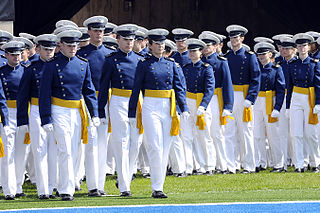
A cadet is a trainee or younger son of a noble family not currently in the direct line of succession. The term is frequently used to refer to those training to become an officer in the military, often a person who is a junior trainee. Its meaning may vary between countries.

The Royal Canadian Sea Cadets (RCSC) is a Canadian national youth program sponsored by the Canadian Armed Forces and the civilian Navy League of Canada. Administered by the Canadian Forces, the program is funded through the Department of National Defence, with the civilian partner providing support in the local community. Cadets are not members of the Canadian Forces.

The Air Training Corps is one of the three corps in the New Zealand Cadet Forces, the other two being the Sea Cadet Corps and New Zealand Cadet Corps. It is funded in partnership between the RNZAF and communities, and its members are civilians. Members have no obligation to head into the regular force, however some do choose to join the New Zealand Defence Force. Unlike the United States Civil Air Patrol, service as an ATC cadet does not translate into higher pay, rank, or seniority in the NZDF.
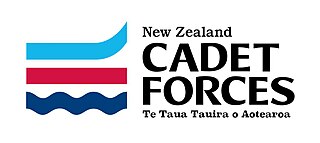
The New Zealand Cadet Forces is a voluntary military-style training organisation for New Zealand youth. Run in a partnership between the New Zealand Defence Force (NZDF) and a number of locally appointed community organizations, it is composed of three Corps : the Sea Cadet Corps (SCC) the New Zealand Cadet Corps (NZCC) and the Air Training Corps (ATC).
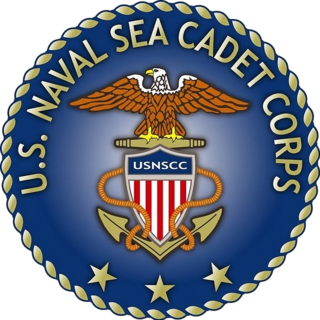
The United States Naval Sea Cadet Corps is a congressionally-chartered, U.S. Navy sponsored organization that serves to teach individuals about the sea-going military services, U.S. naval operations and training, community service, citizenship, and an understanding of discipline and teamwork. The USNSCC is composed of two programs – the senior program for cadets age 13 through the age of 18, and the Navy League Cadet Corps (NLCC), which is for cadets ages 10 through 13.

The New Zealand Cadet Corps, is one of the three corps in the New Zealand Cadet Forces, the other two being the Air Training Corps, and Sea Cadet Corps. There is no reference to the Army within the official title of the NZCC, but an army theme is used for the NZCC. All of its members, from the cadets themselves to the officers and the support committees are civilian volunteers. Members have no obligation to head into the New Zealand Defence Force (NZDF); however, some do choose to join the NZDF.

The Sea Cadet Corps is a branch of the New Zealand Cadet Forces. It is a military-style training organisation for young people between the ages of 13 and 18. It is divided into three areas with 16 units in total. Activities include sailing and boat work, shooting and drill, and cadets need to pass a swimming test at joining.

HMNZS Resolution (A14) was a hydrographic ship of the Royal New Zealand Navy (RNZN). Originally the United States Naval Ship USNS Tenacious (T-AGOS-17), the Stalwart-class ocean surveillance ship was used by the United States to locate and track Soviet submarines from 1989 to 1997, when she was transferred to the RNZN for use as a hydrographic survey ship. She served until 27 April 2012. She was subsequently sold to EGS Group, a private surveying company, and renamed RV Geo Resolution.

HMNZS Wellington was a Leander-class frigate of the Royal Navy and the Royal New Zealand Navy (RNZN). Originally commissioned in 1969 for the Royal Navy as HMS Bacchante, she joined the RNZN in 1982. She was decommissioned in 1999 and sunk in 2005.
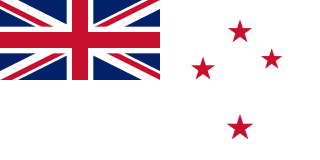
The history of the Royal New Zealand Navy leads back to early New Zealand-based gunboats used in controlling the British interests in the new colony, as well as to the strong linkages to the British Navy itself.

Sea cadets are members of a sea cadet corps, a formal uniformed youth organisation for young people with an interest in water borne activities and or the national navy. The organisation may be sponsored in whole or in part by the navy or a naval supporter's organisation. In the United Kingdom, sea cadets are governed by the parent charity MSSC and receives just over half of its funding from the Ministry of Defence. The Royal Navy is its principal supporter, but it is not a pre-service organisation and works in partnerships with the broader maritime community as well. The various organisations are listed in alphabetical order of their nation.
HMNZS Waikato (F55) was a Leander Batch 2TA frigate of the Royal New Zealand Navy (RNZN). She was one of two Leanders built for the RNZN, the other being the Batch 3 HMNZS Canterbury. These two New Zealand ships relieved British ships of the Armilla patrol during the Falklands conflict, freeing British ships for deployment.

HMNZS Canterbury (F421) was one of two broad beam Leander-class frigates operated by the Royal New Zealand Navy (RNZN) from 1971 to 2005. She was built in Scotland and launched in 1970. Commissioned in 1971, Canterbury saw operational service in much of Australasia and other regions like the Persian Gulf. She undertook operations such as supporting UN sanctions against Iraq and peace-keeping in East Timor. With her sister ship HMNZS Waikato she relieved the Royal Navy frigate HMS Amazon in the Indian Ocean during the Falklands War. Early in HMNZS Canterbury's career she relieved the frigate HMNZS Otago at Moruroa during anti-nuclear protests, in 1973, F 421 being the most effectively insulated frigate, from nuclear fallout, with the Improved Broad Beam Leander steam plant, for e.g., being remote controlled and capable of unmanned operation and therefore the ship a more effective sealed citadel for operations in areas of nuclear explosions.
Sea Scouts New Zealand are part of the New Zealand Scouts Association. There are around 900 Sea Scouts in New Zealand in 53 troops around the country.
The Royal New Zealand Naval Volunteer Reserve (RNZNVR) is the volunteer reserve force of the Royal New Zealand Navy (RNZN).
Navy League of New Zealand is a maritime organisation established in 1896 in New Zealand.
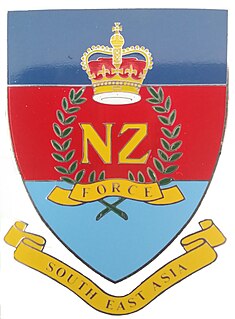
New Zealand Force South East Asia (NZFORSEA) (1974–1989) comprised the elements of the Royal New Zealand Navy, New Zealand Army and Royal New Zealand Air Force. Much of the New Zealand military left Singapore as part of operation Kupe in 1989, leaving behind a residual Defence Support Unit (NZDSU).